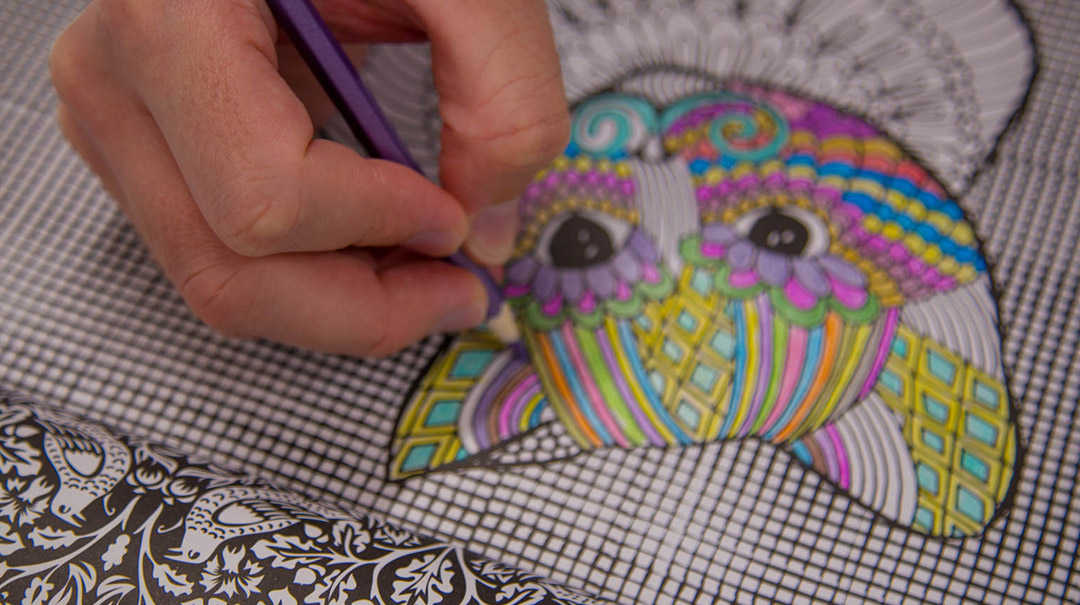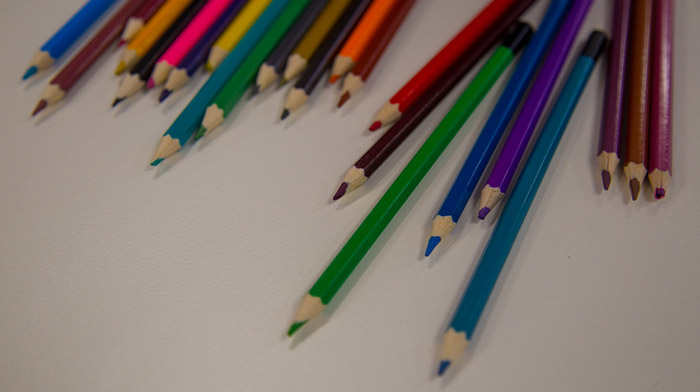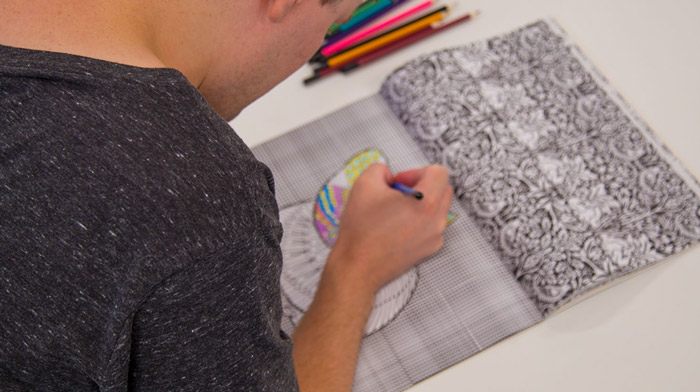Mindfulness, Meditation and Mandalas


Adult colouring books have become widespread in recent years, driving up book sales from one million colouring books sold in 2014 to 12 million in 2015 (based on US statistics).[1] Adults are using the simple, nostalgic pastime of their childhood as a way to relax, unwind and even to ease stress or anxiety.
Adult colouring books differ from children’s colouring books because they do not feature cartoon characters but intricate and repetitive patterns, such as mandalas, which encourage adults to focus on the process, not the outcome.
Despite the rise in adult colouring book sales, there is relatively little research into colouring therapy. In 2005, Nancy A. Curry and Tim Kasser (Knox College in Galesburg, Illionois) completed a study into whether colouring mandalas could reduce anxiety in adults.[2] The study used a test sample of 84 university students split into three groups to test the theory. One group was given a blank sheet of paper, another was given a mandala pattern and the third group, a plaid pattern to colour for 20 minutes. Stress and anxiety levels were recorded before and after the experiment.
Curry and Kasser hypothesise that colouring therapy combines both elements of art therapy and meditation as it helps individuals to organise their ‘inner chaos’ with structured, patterned lines.[3] Their results showed that there was little to no change in anxiety levels within the free-form colouring group, but interestingly, there were similar results of decreasing anxiety in the mandala and plaid patterned group. Curry and Kasser (2005, p. 84) surmised that the mandala and plaid patterns helped to decrease anxiety because they provided structure which drew participants into a meditative-like state.[4]

[ FIND A WAYAHEAD ANXIETY SUPPORT GROUP NEAR YOU ]
In 2013 and 2014, Dr Rodski conducted an experiment with 522 executives to compare the effectiveness of the Colourtation method and a standard ‘mindfulness’ based stress program, focusing on breathing techniques. His study found that the Colourtation method provided a viable stress-relieving activity, as it was an easy activity to pick up and maintain over a 6-month review period, whereas other activities, such as relaxation breathing techniques, generally decreased in practice over time.
However, while colouring therapy is popular and trendy, it does not equate to the application of traditional mindfulness training in mental health treatment. WayAhead also spoke to Alice Shires, the Psychology Clinic Director at the University of Technology, Sydney and Head of the Mindfulness Integrated Therapies Research Clinic, who thought that the term ‘mindful’ is overused.

“I don’t think it is accurate to apply it to colouring or other activities that involve some concentration or focus and perhaps serve to assist relaxation… [It is] fair to say that the rapid increase in the use of mindfulness as a description for activities reflects the enthusiasm for it but, as it has become popularised, it has lost some of its meaning and has been overused for what might be better described as relaxation or concentration activities,” Ms Shires explained.“I believe for it to be used therapeutically, it needs to be very clear with what the rationale and mechanisms of change are.”Dr Rodski also supports a wider response to maintaining mental wellbeing, clarifying that colouring books were a therapeutic process, not a treatment for mental health.
“I am an advocate of meditation, yoga and traditional mindfulness techniques but in the lives of busy people, colouring was a quick way to relax when you don’t have an hour or so to spare. Just focusing on colours and patterns bring control and balance to the mind which achieves homeostasis – a meditative-like state,” Dr Rodski explained.
By Cindee Duong
[1] Statista, 2018, Unit Sales of Adult Coloring Books in the United States in 2014 and 2015 (in millions), viewed 30 January 2018, <https://www.statista.com/statistics/531094/adult-coloring-books-sales-usa>
[2] Curry, N. and Kasser, T. ‘Can Coloring Mandalas Reduce Anxiety?’ Art Therapy Journal of the American Art Therapy Association. 2005, 81-85, viewed 30 January 2018, <https://eric.ed.gov/?id=EJ688443>
[3] Curry, N. and Kasser, T. ‘Can Coloring Mandalas Reduce Anxiety?’ Art Therapy Journal of the American Art Therapy Association. 2005, 81, viewed 30 January 2018, <https://eric.ed.gov/?id=EJ688443>
[4] Curry, N. and Kasser, T. ‘Can Coloring Mandalas Reduce Anxiety?’ Art Therapy Journal of the American Art Therapy Association. 2005, 84, viewed 30 January 2018, <https://eric.ed.gov/?id=EJ688443>
Back to most recent edition
Newsletter
Stay up to date
Sign up to our Mind Reader newsletter for monthly mental health news, information and updates.